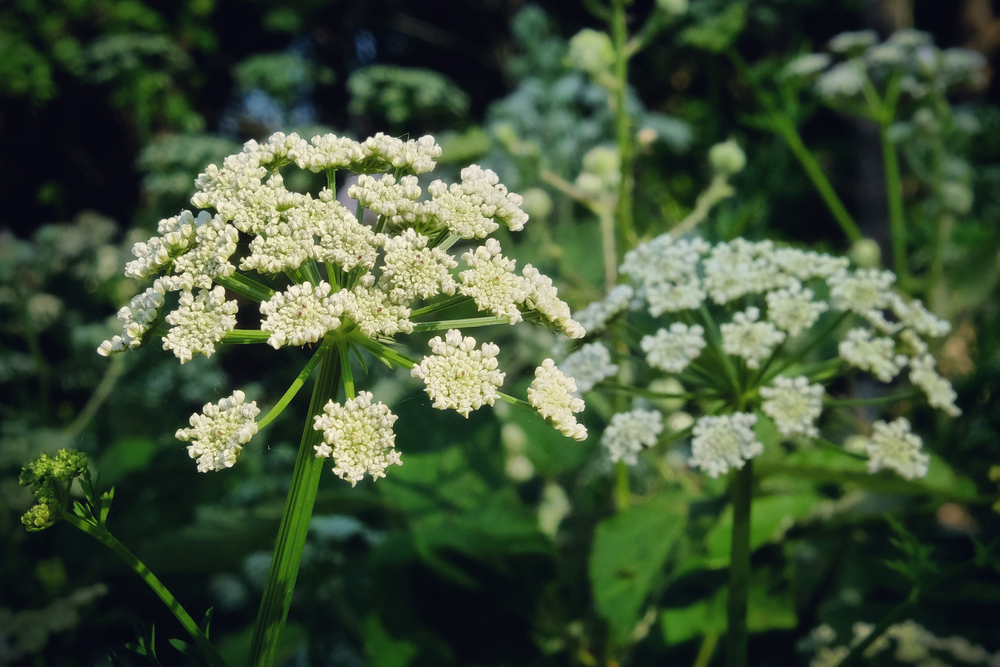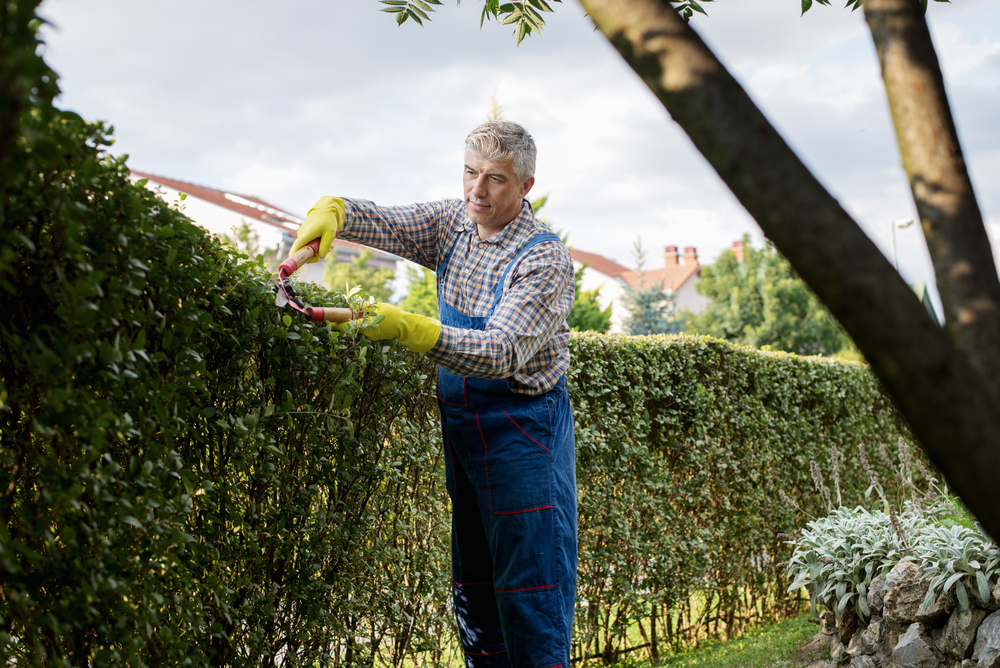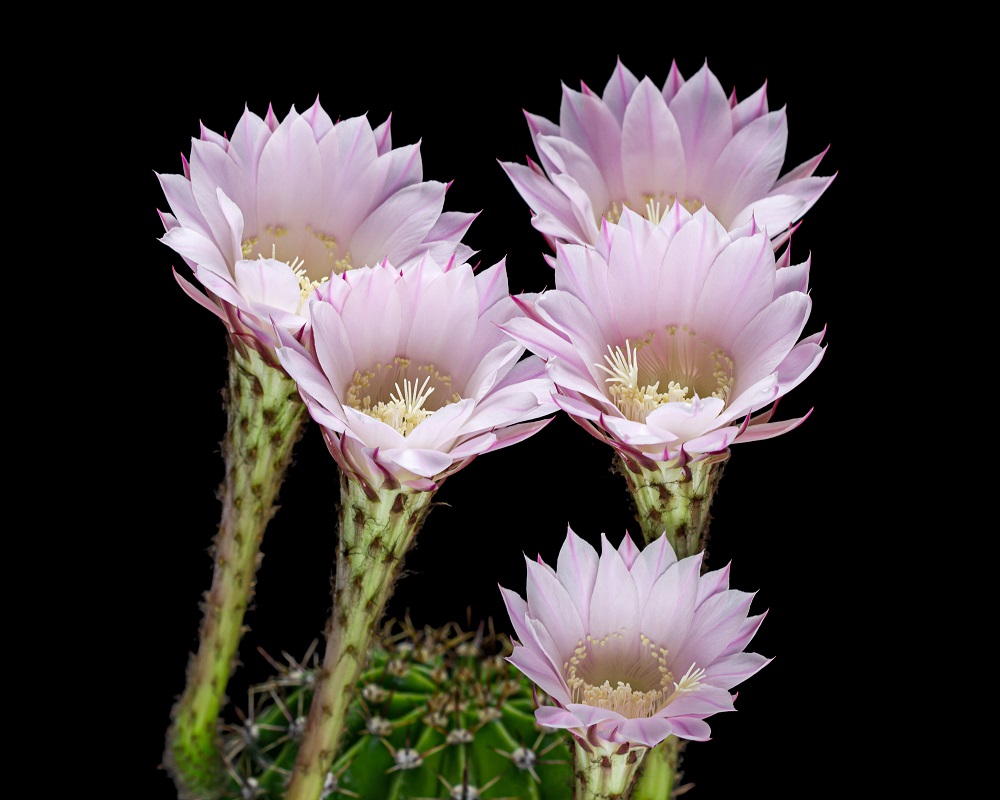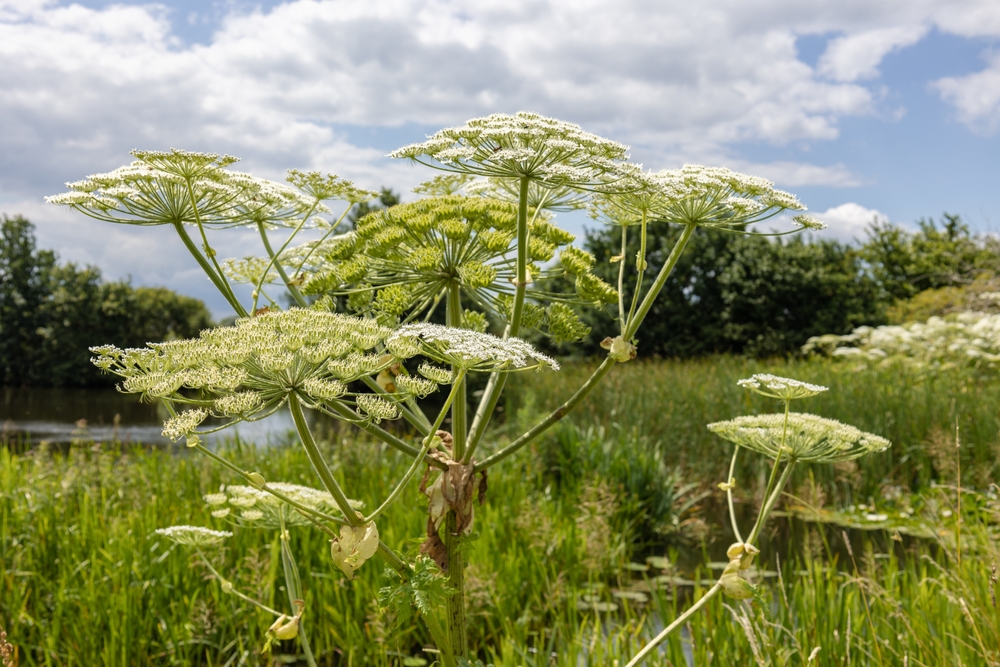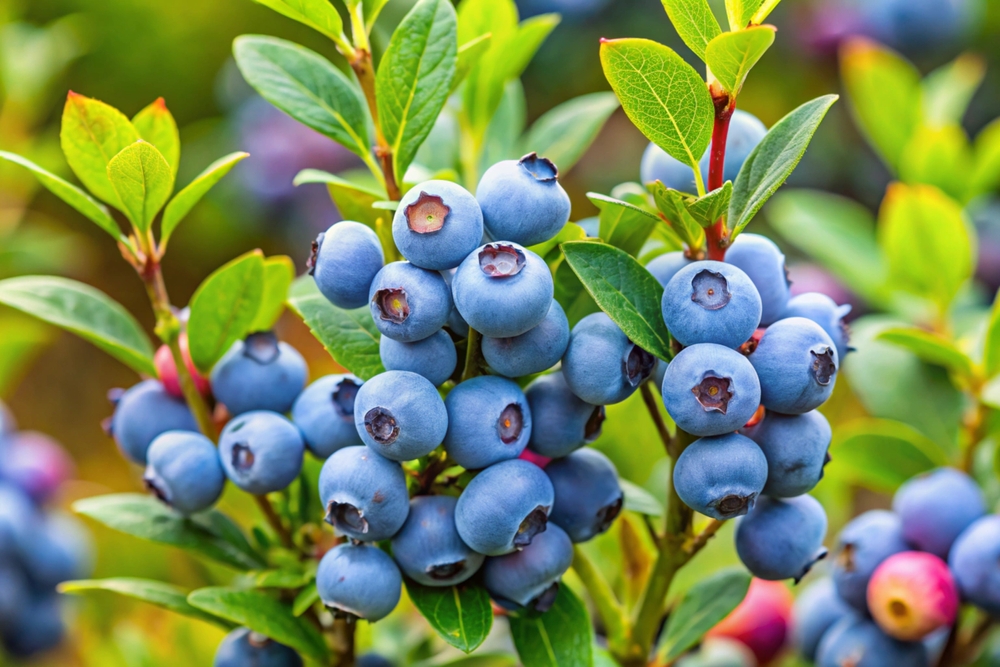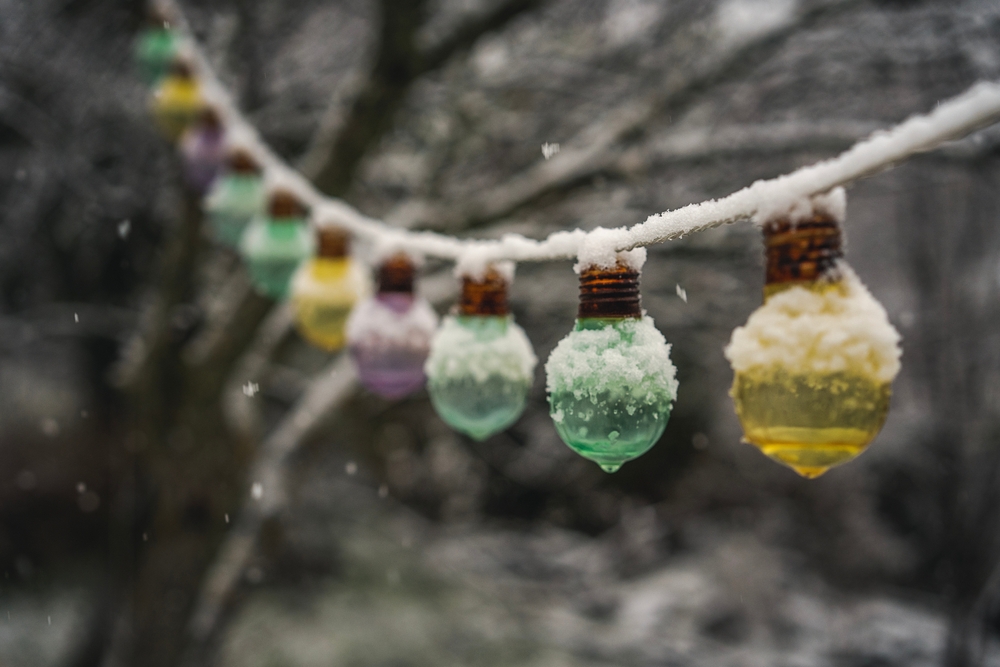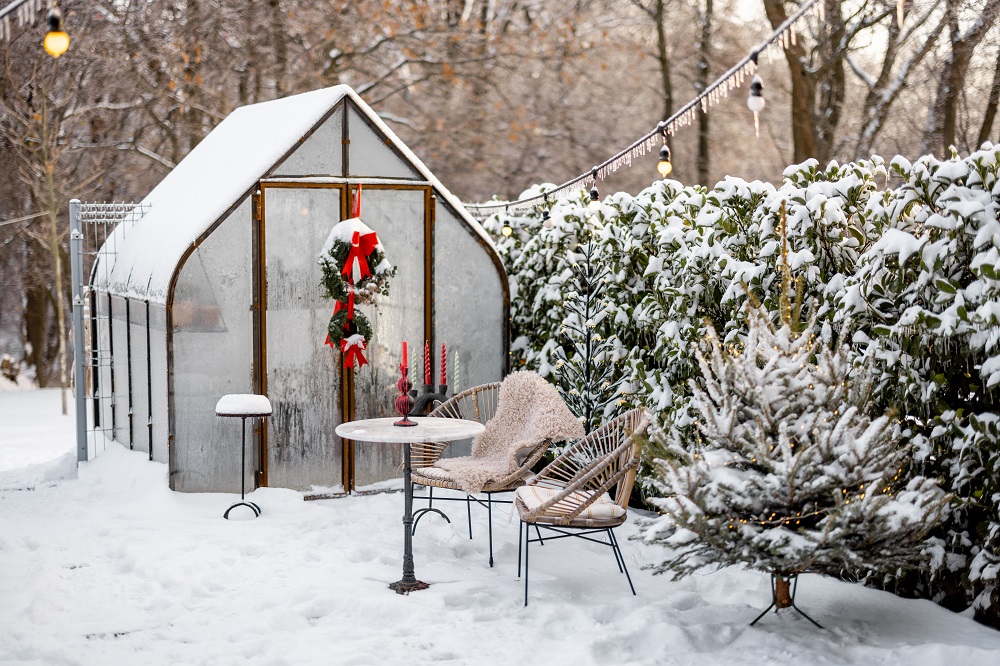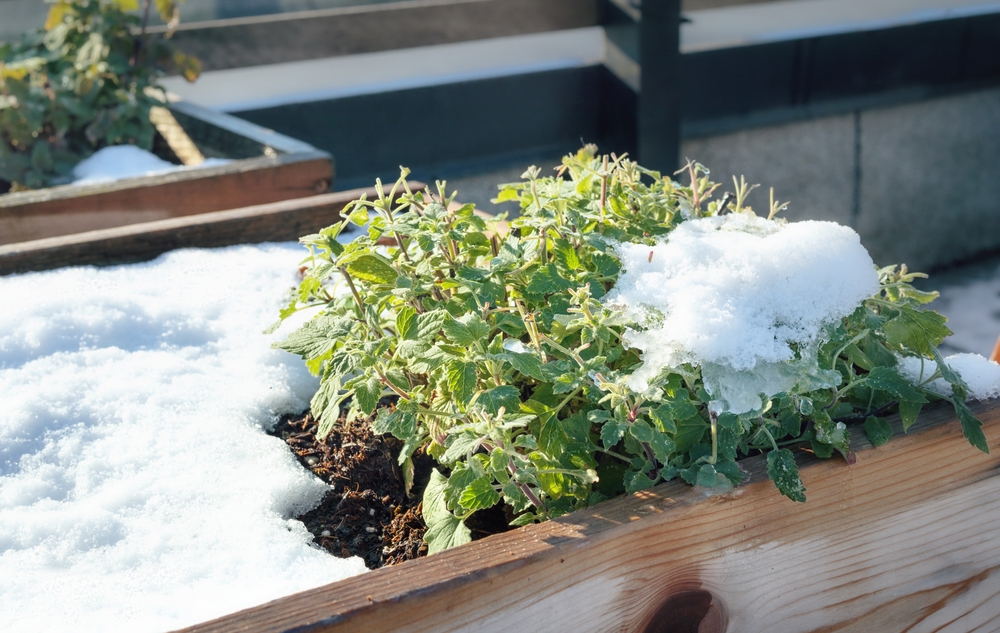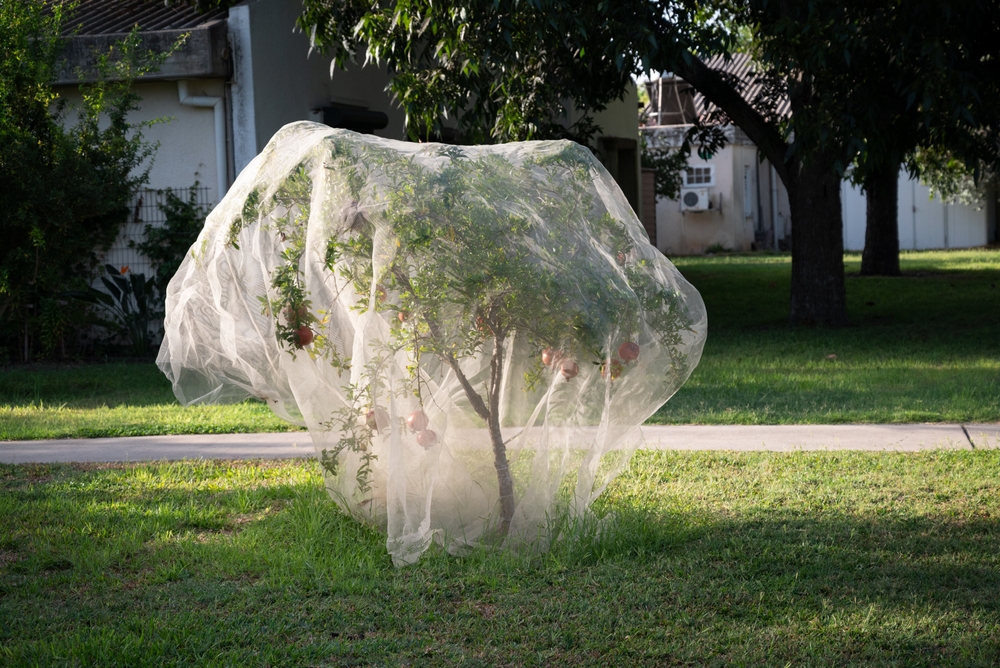These air-purifying plants can be huge lifesavers!
Air pollution is one of the biggest issues we face nowadays, especially for those living in a crowded city. But did you know that the most toxic air around you might be in your living space?
Lack of airflow in your home can cause indoor air pollution to build up and aggravate health issues like allergies and asthma. Your walls, furniture and your carpet can hold toxins, just as well. So, it’s worth figuring out the best way to filter your home’s air.
But before you invest in an expensive air purifier, why not try out a few houseplants first? They’re much more affordable and look a lot better, too.
And while air-purifying plants may not have the brawn of industrial machines, there are actually quite a few that NASA recommends to clear out the toxins in your home.
According to NASA’s Clean Air Study, designed to cleanse the air in sealed space stations, plants can effectively release oxygen into the air, absorb carbon dioxide, and remove pollutants like formaldehyde, benzene, and trichloroethylene.
These chemicals can irritate the ears, eyes, nose, skin, and throat. Some may even lead to cancer. The study indicates that at least one plant per 100 square feet can effectively clean your air.
So be sure to fill your space with one…or more of these 27 air-purifying plants, handpicked by NASA, to filter the air in your home.

But first, how EXACTLY can houseplants purify your indoor air?
The idea of air-purifying plants was started in 1989 after research conducted by NASA. This study focused on ten plants, but quite a few more have been added to the list with time and further analysis.
The scientists experimented with specific plants to test their potential to help purify air. A few of the toxins they found to be eradicated by certain plants are:
-Ammonia, found in fertilizer and cleaning products.
-Formaldehyde, which comes from adhesives, grouts, pressed wood products, wood floorboard resins, heating, and cooking fuels. It’s even found in simple household products like facial tissues and paper towels and is a cancer-causing chemical pollutant.
-Trichloroethylene is prevalent in homes that are going through renovation.
-Benzene, which is primarily found in detergents, furniture wax, glues, paint, and rubber.
-Carbon monoxide, commonly found in stoves, fireplaces, and so on.
Chinese Evergreen
This is a flowering, air-purifying plant that comes from the arum family, Araceae. It’s native to tropical or subtropical regions of Asia and New Guinea.
Many folks choose to have this flowering plant in their home because it doesn’t need high maintenance to make it grow healthy.
The Chinese evergreen is perfect for any atmosphere, so you can also place it inside your home to improve the air quality indoors. One of the biggest reasons why plant lovers love this flowering plant is its attractive-looking leaves and, of course, its actual size.
Boston Fern
Historically speaking, ferns are a plant species used for medicine, food, biofertilization, and gardening. This air-purifying plant is famous for its sword-shaped fronds, which can each be a length of 3 feet. It has a feather-like, bushy appearance with dense green foliage.
The Boston fern is, all in all, a charming houseplant that flourishes in moisture-rich areas. The potting soil for this plant should always be damp, and you should grow it under indirect lighting.
It’ll improve indoor air humidity and reduce air toxins in its environment. Boston Ferns remove xylene, formaldehyde, and toluene.
Chrysanthemums
These beautiful floral houseplants are native to Europe and East Asia, belonging to the daisy family. Chrysanthemums not only produce lovely blossoms but also clean your indoor air. They can brighten up any corner of a room, as well.
This particular plant variety is difficult to grow, though. But we think it’s definitely worth it to enjoy the colorful blooms. The bright flowers can filter pollutants like ammonia and benzene, commonly found in glue, plastic, and detergent.
Water your Chrysanthemum with lukewarm water, providing plenty of good airflow and indirect sunlight. And always place this air-purifying plant near a sunbathed window.
Anthurium
The lovely anthurium produces stunningly red flowers, but be aware that you might see fewer if your lighting conditions are dim. The growth of your flowers will also drop. But generally speaking, low light is better than direct sunlight for the anthurium.
Too much light will scorch this air-purifying plant’s leaves. Besides its incredible beauty, the anthurium also deserves praise for clearing the air of ammonia and formaldehyde. Like many dangerous gases, ammonia doesn’t have a color but a distinct smell, which is alarming.
It’s a nitrogen and hydrogen compound that can irritate your nose and throat while making you cough. In high quantities, ammonia can lead to the burning of your throat, respiratory tract, and nose.
Prolonged exposure may even cause respiratory failure, destroying your airways along the way. So if you suspect that you may have this toxic chemical in your home, add some anthurium to your indoor plant collection, stat.
Broadleaf Lady Palm
This air-purifying plant is a style statement, adding a bit of drama to your indoor space. It’s a strange species originating from a Chinese cultivar, among the few houseplants that can help you reduce ammonia levels. Ammonia is usually found in cleaning products.
But we should warn you that full-grown plants can be expensive. So growing your own from seeds or a smaller version is the economical way to go. Your bathroom is the perfect location for this humidity-loving plant.
Just be sure it gets some filtered sunlight, and the soil stays moist. Maintain the soil’s acidity and add organic matter to facilitate better drainage. And if you want to enhance the dark green color of the leaves, keep the plant in a shady spot.
This air-purifying plant can reach a maximum height of 14 feet, and the fronds can grow about 6-12 inches. You’ll find two main kinds of Broadleaf Lady Palm: variegated and green.
Arrowhead Plant
Unlike the silver queen Chinese evergreen that’s appealing and decorative, you want a more straightforward arrowhead plant if your lighting options are scant.
The main idea is that the more plant patterning or variegation the leaves of the arrowhead have, the more light they require. Those simpler, nice-looking arrowhead plants with unadorned green leaves won’t start wilting in minimal light.
They’ll also clean the air like their more variegated cousins. This air-purifying plant is incredibly talented at removing formaldehyde. Research has even shown that this beautiful plant might decrease formaldehyde by as much as 67% over just 24 hours.
Snake Plant
Snake Plants are well-known for their sculptured and stylish appearance. They can even handle dry soil and a wide range of lighting conditions, making them a fantastic air-purifying plant for forgetful green thumbs.
We must mention, though, that it should be protected from overwatering to limit the risk of root rot. Indirect sunlight is the best option for all Snake plant varieties.
They originate from Africa, Eastern Asia, and Madagascar, and there are about 70 different species that are famous for gardening. Snake Plants can filter the benzene, formaldehyde, xylene, toluene, and trichloroethylene from the air.
Gerbera Daisy
This flowering air-purifying plant originates from South Africa and has a high transpiration rate. It’s a powerful air purifier delivering the happiest blooms in shades of white, salmon, pink, orange, and yellow.
The daisy-like blooms are 2-5 inches in size and have many indoor gardening cultivars, but most flourish on sandy soil and in full sunlight. It would be best if you didn’t plant the crown very deep. Otherwise, this plant can suffer from crown rot.
Likewise, avoid covering the crown with mulch for the same reason. If you keep this plant happy, it can survive for about 3 years. Just remember that it can’t bloom with insufficient sunlight. So, if you keep it in filtered sunlight indoors, ensure it gets sunlight the entire day.
It should be watered when 2 to 3 inches of soil layers have dried, and keep it at a moderate temperature because it won’t survive above 70 degrees. Grow this Daisy indoors to filter out any air toxins like formaldehyde, benzene, and trichloroethylene.

Flamingo Lily
Another name for this air-purifying plant is Anthurium Scherzerianum. It’s named after the Flamingo-like, curled, colorful flowers, and the foliage is elongated. This plant comes from the rainforests in Southern and Central America.
So, humid climates are closer to their natural habitat. Water it regularly to keep the soil moist but not soggy. Also, mist the foliage often to maintain high humidity around this Anthurium. Flamingo Lily also needs bright filtered sunlight.
As far as temperature goes, you can grow it in a range of 60 to 90 degrees. It’s perfect for filtering toluene, ammonia, and formaldehyde.
Bamboo Palm
As an indoor plant, the Bamboo Palm can add warmth and color to any space in your home. The fronds on this air-purifying plant are slightly wider than other varieties, but it thrives in the same growing conditions.
They need moist soil, bright filtered sunlight, and thorough watering. A bamboo palm always prefers filtered water at room temperature and can adjust to low lighting. The best part about it is that it filters ammonia, xylene, and formaldehyde within the house.
But remember, the more sunlight it gets, the taller it will grow. A mature Bamboo Palm can be anywhere between 4 to 12 feet in size and thrives in high humidity. So, somewhere like your bathroom is a perfect location.
The plant care for bamboo palms is easy, but watch out for pests such as spider mites. This plant species has over 100 varieties to choose from. So grow your favorite based on your indoor climate and preference.
Cast Iron Plant
If you’re looking for an air-purifying plant species to add to your indoor garden that thrives on low light and can clean the air at the same time, Gardeners And Plants highly recommend the cast iron plant. They do well in either low light or filtered bright light.
Just don’t overdo it with the light, which can cause some of its leaves to start turning brown. Also, be aware that you shouldn’t water this plant often if it doesn’t absorb much light.
The cast iron plant will reduce formaldehyde and benzene levels at home and is also a favorite in the office.
Dumb Cane
Lots of dumb cane or Dieffenbachia cultivars do well in filtered low light. Just be sure to check your particular variety before you assume it’s okay to place yours in a dark corner.
You might also notice that your plant doesn’t grow as fast with minimal light. Growth can stop altogether in severe low-light conditions, but if your air-purifying plant is otherwise healthy, you’re all set.
The thick leaves of the dumb cane help make your indoor air cleaner… But those leaves can also cause vocal cord numbing if eaten, so be aware of this fact if you have any young kiddos around!
Aloe Vera
This hardy plant originates from Africa and is well known for having several medicinal uses. It’ll look lovely in a place like your kitchen window sill. This succulent can grow nicely in poor soil with a bit of water and reaches an average height of 2 to 3 feet.
The gel that gets extracted from the leaves of the Aloe is used to heal wounds and treat burns. Those growing outside can even produce bell-shaped flowers. This medicinal plant thrives in succulent or cacti soil and enjoys bright spots with indirect sunlight.
This air-purifying plant also takes in carbon dioxide and, simultaneously releases oxygen in the nighttime, and purifies the air from toxins like benzene and formaldehyde.
ZZ Plant
If a ZZ plant is healthy, it has a waxy coating with smooth leaves, but how you keep it healthy can happen in a couple of ways.
Due to its reputation for being difficult to kill, the ZZ plant won’t shy away from low light, but indirect to moderate light is the best growing condition for it to thrive.
If you have this plant in your home, you can reduce toluene, benzene, and xylene levels with this air-purifying plant. Benzene is a chemical compound that won’t dissolve all that much in water and is highly flammable.
It might cause headaches, dizziness, and a fast heart rate. It can even be fatal if you inhale large quantities of it. Toluene isn’t any better and can cause insomnia, headaches, anxiety, and, oddly enough, euphoria.
But more severely, toluene could contribute to liver and kidney damage. So you can’t go wrong with owning a ZZ plant.
Pineapple Plant
Pineapple plants started in South America and soon spread to other regional areas. They don’t remove toxins, but they’re great to have around because they improve air quality by producing more oxygen at night.
They also add an exotic touch to your home with the dramatic foliage and giant leaves. Those tough leaves don’t allow much water to escape, though. So, this air-purifying plant requires minimal watering.
It comes from the bromeliad family, has a small root system, and doesn’t require special soil. Pineapple plants prefer to be in full sun but can also resist spotted shade.
This hardy plant variety is unsuitable for frosty areas, and like many other houseplants, it can’t tolerate soggy or waterlogged soil.
Rex Begonia
The begonia family is expansive, but you’ll want to grab a rex begonia specifically if you have low-light conditions. It’s not like there’s much wrong with that, though, considering this air-purifying plant grows in beautiful patterns with tints of maroon.
You can also try tuberous begonia cultivars because these will also be fine in low light. Many cultivars of the begonia are experts at keeping your air clean, in fact.
But we highly recommend increasing your light and embracing a wax begonia, which is extra-efficient in clearing benzene from indoor spaces.
Ficus Benjamina
Also known as the Weeping Fig, this air-purifying plant expertly filters most of the toxins in carpeting and furniture, including xylene, formaldehyde, and toluene. Fun Fact: This is a popular houseplant from the Victorian Times.
But unlike others mentioned in our list, it’s not an easy air-purifying plant to deal with. This fussy variety dislikes any sort of change in its environment. It’s a sensitive plant that will start dropping or yellowing the leaves if you change its watering habits or location.
But luckily, the leaves will return once the plant adjusts to its new environment.
It’s native to various locations, from Australia to India, and can thrive for many years if you maintain consistent plant care, including providing filtered sunlight, watering with gaps, and high humidity. And remember to keep it away from drafts.
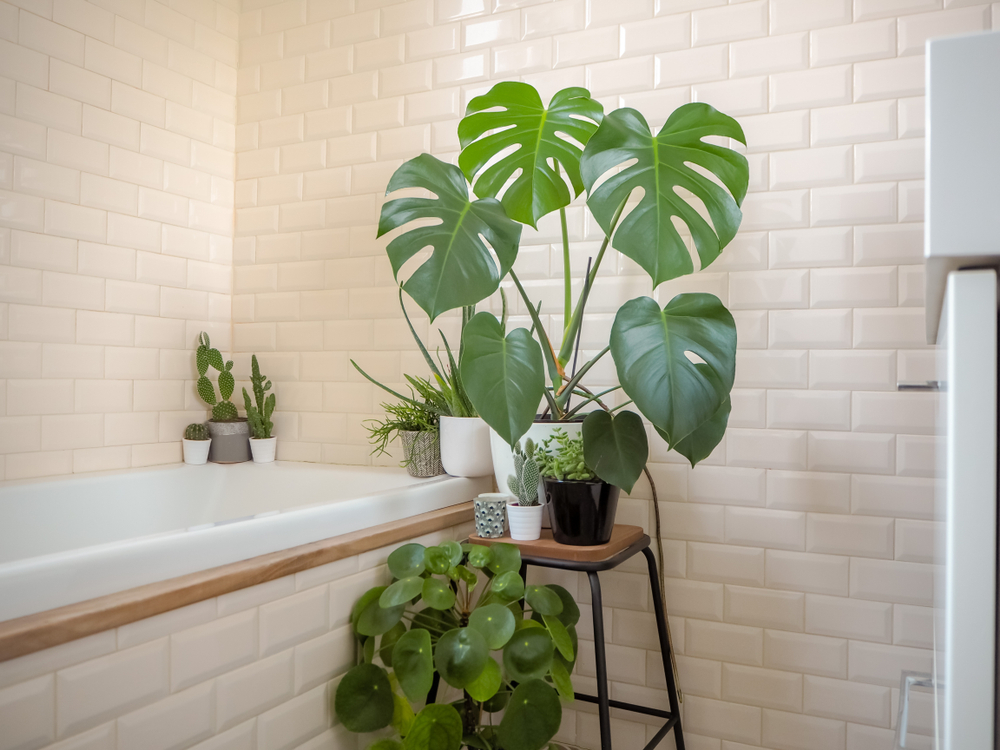
Swiss Cheese Plant
If you want to be the envy of your fellow plant lovers, you MUST place a Swiss cheese plant a.k.a. Monstera deliciosa in your home! Don’t have much space to work with? You can limit the growth of this often-gargantuan plant by placing it in a low light spot.
Brighter light will let the growth of the monsterra plant run rampant, where it can grow up to 10 feet, sometimes taller.
Since its leaves are so generously sized, the Monstera deliciosa has no issue absorbing toxins from the air, including formaldehyde. NASA puts it very high up on its list of air-purifying plants along with the philodendron because of those enormous leaves.
Spider Plant
This is one of the best houseplants you can have because it demands minimum attention from you and adapts to many growing conditions. It’s a perfect choice for newbie gardeners. Because of their trailing growth habit, these air-purifying plants look fantastic in hanging baskets.
And with the proper care, a Spider plant multiplies fairly quickly by growing spider-shaped plantlets. The name implies the spidery appearance and the rosette foliage of the plant.
This plant requires a cooler temperature for healthy growth, between 55 to 65 degrees Fahrenheit. The narrow leaves and tiny white flowers make it a beautiful addition to your plant collection.
And the best part? This plant is also safe for pets! NASA even says that Spider Plants can eliminate up to 90% of formaldehyde from the indoor air within 24 hours. It also reduces xylene and carbon monoxide.
Prayer Plant
The tiny prayer plant will thrive if you place it in indirect bright sunlight. But low light periods won’t harm this air-purifying plant’s growth and progress either.
After all, this plant comes from Brazil’s rainforests, where thick foliage blankets can sometimes limit or block the sun entirely for long periods of time.
Like the calathea, it may close its leaves as the sun sets and blooms in the morning. This is normal behavior and doesn’t stop the prayer plant from cleaning your indoor air through filtration.
Peace Lily
As the days get longer in the summer and the sun more intense, the peace lily appreciates you moving it somewhere where its light is a bit more moderate. For the rest of the year, though, indirect light works best to cause that beautiful white flower to bloom.
The peace lily hovers near the top of all the air-purifying plants on NASA’s list, and we understand why. It removes toxicity from the air by either breaking down the chemical compounds entirely or neutralizing them.
You’ll have less benzene and formaldehyde in your home, not to mention carbon monoxide, which this plant can also remove from the air. Don’t forget that carbon monoxide can be fatal very fast if you inhale too much of it.
While having a peace lily in your office or home doesn’t replace a carbon monoxide alarm, you’ll be happy you have this extra protection.
English Ivy
This stunning plant is native to various regions, including Africa, Asia, and Europe. It was first introduced to our environment in 1727. This air-purifying plant is perfect for purifying the bathroom because it reduces airborne fecal particles and fights mold levels within your home.
It’s a trailing plant that demands regular watering because it grows in moist soil conditions. The English Ivy also needs roughly 4 hours of direct sunlight daily and an ample amount of moisture.
Under perfect conditions, this climber can grow to 50 feet. It removes toxins like toluene, formaldehyde, xylene, and benzene. To help you out, HERE’S one of our favorite watering cans from Amazon!
Bird’s Nest Fern
The bird’s nest fern is another one of those air-purifying plants that prefers low light. Medium light is also acceptable, but you don’t want to make things any brighter than that. Excess light will cause this plant’s leaves to become crinkly like a French fry.
The leaves will stay smooth and flat if your bird’s nest fern gets the right amount of light. If you place it in your home, you can say goodbye to xylene, toluene, and formaldehyde in the air because the bird’s nest fern efficiently removes all these toxins.
Areca Palm
Areca Palm, a.k.a. the Yellow Butterfly Palm, is among the easiest to grow indoors. It can reach a whopping height of 8 feet, and you can grow it in a soil-based potting compost to avoid unnecessary repotting.
You can use a peat-based potting mixture and place it in a sunny location because this air-purifying plant enjoys partial to full sunlight. The Areca Palm is native to Madagascar and needs high humidity levels to maintain its stunning look.
It’s also a heavy feeder that requires regular feeding from spring to early fall. The temperature range for this beautiful plant is 68 to 86 degrees, and it removes toluene and xylene from its surrounding atmosphere.
Dracaena Marginata
Dracaena is a famous plant type with 120 succulent trees and shrubs in its collection. So, if you’re looking for more unusual air-purifying plants, you can try the tricolor varieties from the Dracaena family.
The Dragon Tree plant adds a pop of color with its sword-like leaves with pinkish-red rims. After fixing it with peat moss, you can grow it in a loamy soil mixture. It thrives on bright sunlight, but it can also survive in partial shade.
It removes trichloroethylene, xylene, and formaldehyde, which are usually found in furniture varnish, hair sprays, and polish.
Pothos
The pothos are also a fantastic addition to your indoor spaces if your lighting conditions are slightly less than ideal. Besides its ability to live in lower lighting, the pothos can withstand reduced humidity and colder air than most usually require.
The golden pothos, in particular, can thrive in low, medium, and even bright light. Known for being extremely effective at cleaning the air, this plant will clear your home of carbon monoxide, xylene, formaldehyde, toluene, and benzene.
Now that you’ve learned a bit about these chemicals and what they can do to your health, you’ll love having an air-purifying plant like this around.

Rubber Plant
Frequently known as the ficus robusta, this plant variety is native to India. You can grow it in small containers or let it thrive and become an indoor tree. This air-purifying plant is a fantastic addition to indoor spaces, especially in areas with low sunlight.
It’s great at removing formaldehyde, but to help it perform its best, keep it in moist, well-draining potting soil and filtered light. Whether you grow the regular green or burgundy variety, both will effectively remove up to 60% of bacteria and mold from indoor atmospheres.
It has the highest oxygen production rate compared to many other plants, and fighting the bacteria is this plant’s primary defense mechanism to protect its surrounding soil.
Do you already have any of these air-purifying plants? If not, be sure to let us know which ones you plan on getting. And if you liked this article, we highly recommend also reading: 8 Stunning Low-Maintenance Shrubs You Can Plant and Forget About

